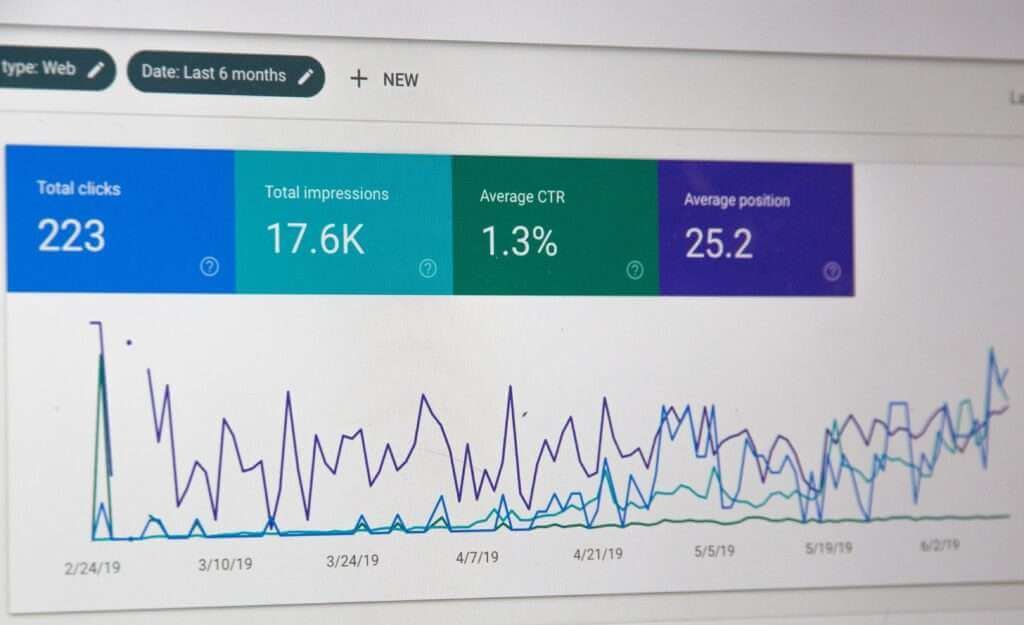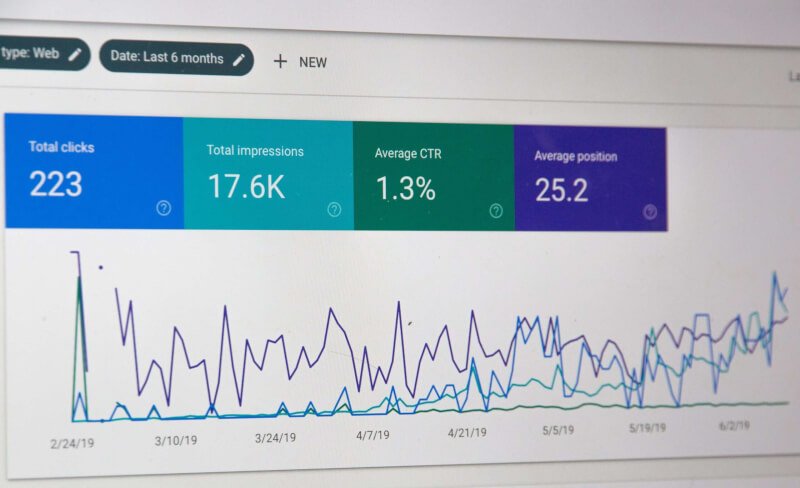Are you curious about how to keep track of your affiliate marketing sales and commissions? If you’re looking for ways to monitor your progress and measure your success in the affiliate marketing world, you’re in the right place. In this article, we will explore various strategies and tools that can help you easily and efficiently track your affiliate marketing sales and commissions. By the end, you’ll have a clear understanding of how to effectively monitor your performance and optimize your earnings. So let’s dive in and discover the secrets to tracking your affiliate marketing success!
What is Affiliate Marketing?
Affiliate marketing is a performance-based marketing strategy where individuals or businesses, known as affiliates, promote the products or services of a company and earn a commission for each successful referral or sale they generate. It is a win-win situation for both the company and the affiliates, as it allows the company to expand its customer base and increase sales while providing affiliates with an opportunity to earn passive income.
Choosing an Affiliate Network
When starting with affiliate marketing, choosing the right affiliate network is crucial. An affiliate network acts as an intermediary between the company and affiliates, helping to manage affiliate programs and track performance. Some popular affiliate networks include Commission Junction, ShareASale, and Amazon Associates.
To choose the right affiliate network for you, consider factors such as the types of products or services offered, the commission rates, the reputation and reliability of the network, and the level of support and resources provided to affiliates. Research different networks, read reviews, and join forums or communities to gather insights from experienced affiliates.

Setting Up Tracking Links
Tracking links are essential in affiliate marketing as they enable the tracking of clicks and conversions generated by affiliates. These links contain unique identifiers that help attribute sales or leads to specific affiliates, allowing for accurate commission calculations and performance analysis.
Affiliate Network Tracking Options
Most affiliate networks offer built-in tracking solutions that automatically generate tracking links for each affiliate. These links come preconfigured with the necessary tracking parameters, such as the affiliate’s ID or username, to track their performance accurately.
Custom Tracking Solutions
Alternatively, some companies may choose to set up their own custom tracking solutions. This approach allows for more flexibility and customization but requires technical expertise in setting up and maintaining the tracking system. Custom tracking solutions can be created using tools like Google Analytics, third-party tracking software, or by integrating with the company’s existing CRM system.
Using Tracking Tools
Tracking tools play a vital role in affiliate marketing as they provide valuable insights and data that help optimize marketing strategies and drive higher conversions. Here are two popular tracking tools widely used by affiliates:
Google Analytics
Google Analytics is a powerful and free web analytics tool that provides comprehensive data about website traffic, user behavior, conversion rates, and more. By integrating Google Analytics with your affiliate links, you can track the performance of each affiliate, identify top-performing channels, and gain insights into user engagement and conversion patterns. Google Analytics offers a plethora of features and reports that can help optimize your affiliate marketing efforts.
Third-Party Tracking Software
In addition to Google Analytics, there are various third-party tracking software options available in the market. These tools provide advanced tracking capabilities and additional features specifically designed for affiliate marketing. Popular tracking software like Voluum, ThriveTracker, or ClickMagick offer real-time tracking, A/B testing, conversion tracking, and detailed reporting to help affiliates optimize their campaigns and maximize their earnings.

Tracking Sales and Commissions
Accurately tracking sales and commissions is essential to ensure that affiliates are properly compensated for their efforts. Affiliate networks typically provide a dashboard or reporting interface where affiliates can track their sales, commissions, and other relevant metrics. These reports provide a detailed breakdown of sales by date, product, and referrer, allowing affiliates to monitor their performance and earnings.
To track sales and commissions effectively, ensure that your tracking links are properly implemented on your website or landing pages. Test the links regularly to ensure they are functioning correctly and capturing the necessary data. Additionally, communicate with your affiliate network or tracking software provider to troubleshoot any tracking issues or discrepancies that may arise.
Monitoring Affiliate Performance
Monitoring affiliate performance is essential to identify top-performing affiliates, optimize marketing strategies, and improve overall program effectiveness. Here are a few key factors to consider when evaluating affiliate performance:
Evaluating Impressions and Clicks
Impressions and clicks provide insights into the visibility and reach of an affiliate’s promotional efforts. Monitoring impressions and click-through rates (CTRs) helps identify affiliates who are effectively driving traffic to your website or landing pages. Analyzing these metrics allows you to allocate resources more efficiently and provide support or guidance to affiliates who may need assistance in improving their promotional strategies.
Analyzing Conversion Rates
Conversion rates measure the percentage of visitors who complete a desired action, such as making a purchase or submitting a lead form. By tracking conversion rates for individual affiliates, you can identify high-converting channels and optimize campaigns to improve overall conversion performance. Understanding the factors that contribute to high conversion rates can help replicate success across other affiliates or identify areas for improvement.
Identifying Top Performing Affiliates
Regularly monitor and evaluate the performance of your affiliates to identify top performers who consistently drive high-quality traffic and generate substantial sales. Consider factors such as conversion rates, sales volume, customer retention, and overall contribution to your marketing goals. Recognizing and rewarding these top performers can boost their motivation and loyalty, leading to even better results in the long run.

Analyzing Traffic Sources
Understanding the sources of traffic that drive conversions is crucial in affiliate marketing. By analyzing different traffic sources, you can identify the most effective channels and allocate resources accordingly. Here are some common traffic sources to consider:
Direct Traffic
Direct traffic refers to visitors who directly type your website’s URL into their browsers or have your website bookmarked. These visitors already have awareness of your brand or have visited your website previously. Monitoring direct traffic helps gauge the effectiveness of brand awareness campaigns and assess the loyalty of your customer base.
Organic Search
Organic search traffic comes from search engine results when users search for relevant keywords or phrases. Analyzing organic search traffic can provide insights into the effectiveness of your SEO efforts and help identify keywords that drive the most conversions. By optimizing your website for these keywords, you can attract more organic traffic and increase affiliate conversions.
Referral Traffic
Referral traffic comes from external websites that link to your website or landing pages. This can include blog posts, social media platforms, or other websites that mention or recommend your products or services. Tracking referral traffic helps identify influential affiliates or partners who drive significant traffic and conversions. Building strong relationships with these affiliates can lead to increased exposure and sales.
Paid Advertising
Paid advertising encompasses any traffic generated through paid campaigns like Google Ads, Facebook Ads, or other online advertising platforms. Monitoring paid advertising campaigns provides insights into the effectiveness of your ad spend and helps optimize campaigns for better conversion rates. By continuously analyzing and refining your paid advertising strategies, you can achieve higher returns on investment and attract more quality traffic.
Utilizing Conversion Pixels
Conversion pixels are small pieces of code placed on your website or landing pages that track specific actions taken by visitors. These pixels are used to measure conversions and attribute them to the correct affiliate or marketing channel. They capture data such as sales, sign-ups, or leads and send this information to the affiliate network or tracking software for accurate commission calculations.
By utilizing conversion pixels, you can track the entire customer journey, from the initial click to the final conversion. This level of tracking granularity enables you to optimize your marketing efforts and identify the highest converting touchpoints. Conversion pixels are often provided by affiliate networks or tracking software, and they should be implemented correctly to ensure accurate tracking and attribution.
Integrating CRM Systems
Integrating your affiliate marketing efforts with your Customer Relationship Management (CRM) system allows for seamless data sharing and enhanced customer insights. By integrating affiliate tracking with your CRM, you can better analyze customer behavior, understand the lifetime value of customers generated by affiliates, and implement personalized marketing campaigns tailored to specific audience segments.
CRM integration enables you to attribute sales and other key metrics to specific affiliates or referral sources, providing a more accurate picture of their performance. It also allows for advanced reporting and analysis, helping you identify trends, create targeted promotions, and improve customer retention. Consult with your CRM provider or seek professional assistance to properly integrate your affiliate tracking with your CRM system for optimal results.
Optimizing Affiliate Marketing Strategies
To maximize the potential of your affiliate marketing program, it is essential to continuously optimize your strategies. Here are a few techniques that can help improve performance and drive higher conversions:
A/B Testing
A/B testing involves comparing two versions of a webpage, creative, or marketing message to determine which one performs better. By testing different elements like headlines, call-to-action buttons, or colors, you can identify the most effective variations that resonate with your target audience. Implementing A/B testing can result in significant improvements in conversion rates and ultimately lead to higher affiliate commissions.
Implementing New Creatives
Stale or repetitive creatives can diminish the impact of your affiliate marketing campaigns. Experiment with fresh and engaging creatives, including banners, videos, or interactive elements, to capture the attention of your target audience. Continuously update and optimize your creatives to align with market trends and consumer preferences, ensuring that your affiliate marketing efforts remain relevant and effective.
Negotiating Commission Rates
Negotiating commission rates with your affiliates can be mutually beneficial. Consider offering tiered commission structures or performance-based incentives to motivate affiliates to drive more sales or high-quality leads. Regularly review commission rates and adjust them according to the value and profitability of each affiliate’s traffic. By fostering a fair and rewarding commission structure, you can attract top-performing affiliates and maintain their loyalty.
In conclusion, tracking affiliate marketing sales and commissions is crucial for monitoring performance, optimizing strategies, and driving higher conversions. By leveraging affiliate networks, tracking software, and web analytics tools, you can gain valuable insights into the effectiveness of your campaigns, identify top-performing affiliates, and maximize your affiliate marketing success. Implementing conversion pixels, integrating with CRM systems, and optimizing strategies further enhance your overall affiliate program, leading to increased sales and long-term profitability. Remember to continuously review and refine your approach, keeping up with industry trends and adopting new techniques to stay ahead in the competitive world of affiliate marketing.


